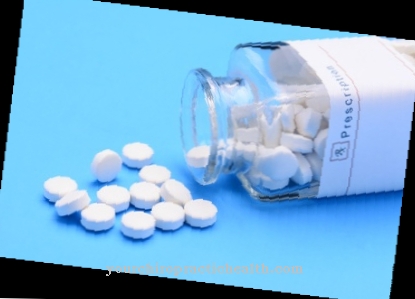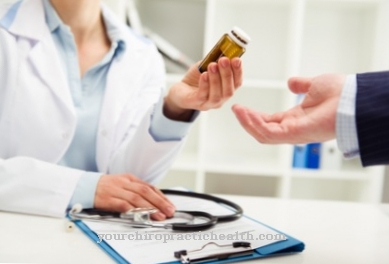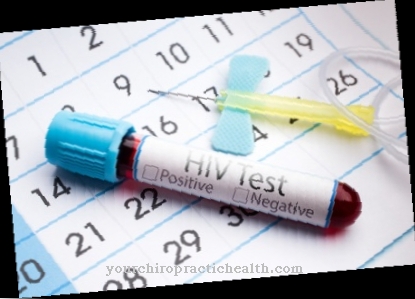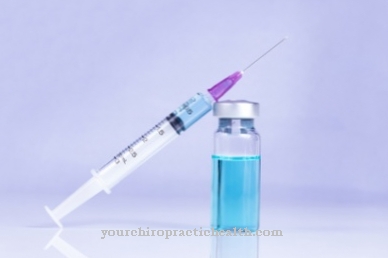Cardiac glycosides are medicinal substances that have a positive effect on the heart's beating power and at the same time lower the heart rate. They are used to treat heart disease.
What are cardiac glycosides?

Cardiac glycosides are active ingredients whose effects are related to the heart. From a chemical point of view, the active ingredients are characterized by three deoxysugars, which occur only very rarely in nature. These deoxysugars are attached to a steroid derivative in a glycosidic bond. The glycoside bond is also partially present in derivatives of the gonan.
Cardiac glycosides are also often called Digitaloids or simplified as digitalis designated. This name is based on the foxglove (digitalis), which contains cardiac glycosides in very high doses.
Only digitoxin and digoxin are used clinically today. Digitoxin is a steroid glycoside from the class of cardiac glycosides. It is obtained from the red foxglove (Digitalis purpurea). Digoxin is also a digitalis glycoside from the foxglove. Digoxin and digitoxin belong to the endogenous glycosides. That means that they act as hormones. In humans, digoxin is produced in small amounts in the adrenal gland.
Cardiac glycosides are used primarily in the treatment of acute and chronic heart failure. They are also used in the treatment of atrial fibrillation and atrial flutter.
Cardiac glycosides are usually administered in the form of tablets. Only strophanthin is given intravenously due to its poor absorption rate. The substances are mainly excreted via the liver and bile.
Pharmacological effect
Cardiac glycosides show a positive inotropic effect. The term inotropy is used to describe the influence on the contractility of the heart muscle tissue. If the inotropy is positive, the contraction force of the heart is increased. This increase is based on an increased supply of calcium ions in the heart muscle cells. To do this, the cardiac glycosides bind to the α-subunits of the sodium-potassium-ATPase and thus inhibit the active transport of potassium ions into the cell. At the same time, the outflow of sodium ions from the cell is hindered. The sodium concentration inside the cell increases. As a result, the sarcoplasmic reticulum, a special form of the endoplasmic reticulum within muscle cells, absorbs more calcium ions. These calcium ions are available for the heart muscle to contract, so that the force of contraction increases.
At the same time, cardiac glycosides also have a negative dromotropic effect. They lower the nerve conduction speed. This effect is achieved by increasing the initial potassium outflow from the muscle cell. The heart contracts less often due to the slowed transmission of stimuli. This enables a stronger contraction with more ejection volume.
Cardiac glycosides also show a positive bathmotropic effect. Bathmotropy is the influence of stimulus thresholds and the excitability of the heart.Positive bathmotropic substances lower the arousal threshold so that the heart can contract more easily.
Medical application & use
The main areas of application for cardiac glycosides are acute and chronic heart failure. With heart failure, the heart is no longer able to supply the body with sufficient blood. Acute heart failure develops within a few hours to days. Causes are, for example, cardiac arrhythmia, cardiac tamponade, pulmonary embolism, heart valve insufficiency or heart attack.
Chronic heart failure develops within months to years. Causes are, for example, chronic lung diseases. Cardiac glycosides are also administered for atrial fibrillation or atrial flutter. Atrial fibrillation and atrial flutter can be completely symptom-free. Often those affected only notice a drop in performance. Symptoms such as dizziness, shortness of breath, feelings of fear or chest pain are also possible.
Risks & side effects
The use of cardiac glycosides and especially the use of digoxin are controversial. Current studies show that patients with heart failure who were treated with digoxin had a 72 percent higher mortality rate than patients who were treated with other drugs.
Cardiac glycosides also have a very small therapeutic window. Even small deviations from the optimal dose can lead to undesirable effects and symptoms of poisoning. The therapeutic and toxic areas overlap in many cases. Patients often complain of loss of appetite and nausea. Digitalis intoxication through overdose manifests itself in vomiting, diarrhea and cardiac arrhythmias. Headaches, restlessness and even psychotic confusion can occur.
Green-yellow vision is typical of digitalis intoxication. In addition, those affected see bluish asterisks or dots. These phenomena are called the cornflower phenomenon.
Causally, intoxications are treated by inhibiting the further uptake of active substances. Gastric lavage is carried out for this. Alternatively, activated charcoal can also be administered. In addition, the circulation between the intestine and liver is interrupted by the administration of colestyramine. Symptomatic, especially the electrolyte disturbances are balanced and the cardiac arrhythmias treated. There is also the option of giving a digitalis antidote. Here, however, there is a risk of an allergic reaction, which can range up to allergic shock.
It should be noted that the strength of the cardiac glycosides can be influenced by various medications and also by fluctuating concentrations of electrolytes in the blood. It must therefore always be used in an individual dose. In addition, close blood tests are required when taking cardiac glycosides.
The cardiac glycoside digoxin must not be administered to patients with renal insufficiency. Digitoxin is contraindicated in combined renal and hepatic insufficiency.
























.jpg)



